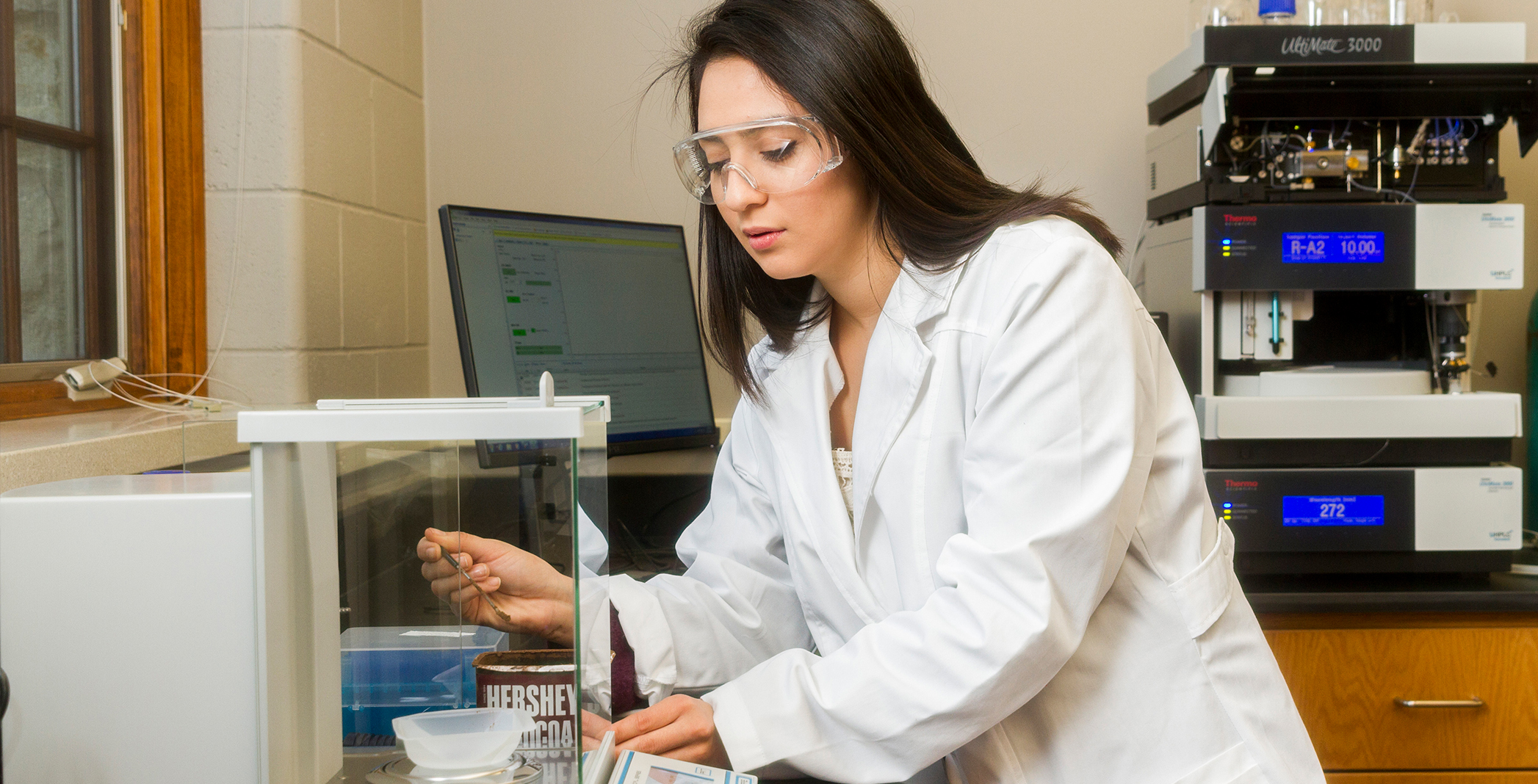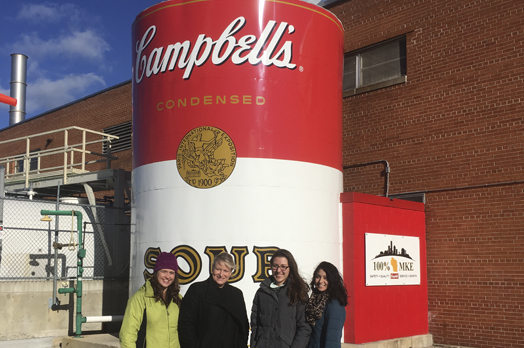Practical Science, Promising Future

Posted on March 29, 2017
As food makes its way from farm to fork, there are critical links in the delivery system that require a generous portion of science, including ensuring freshness, quality and safety.
The science behind food safety, manufacturing and product development will be offered at Mount Mary starting Spring 2017; it complements the food and science programs already well established here, said Cheryl Bailey, dean of the School of Natural and Health Sciences.
“This food science program builds on strengths of both the chemistry and dietetics departments,” Bailey said. “It also has the opportunity to build synergy with many other departments since food has so many aspects that intersect with other disciplines.”
The relationship to dietetics
Food science as a course of study is markedly different than dietetics, Mount Mary’s other food-related program. Think of dietetics as the intersection of food and behavior, such as disease prevention and health promotion. Food science, on the other hand, is the study of the chemistry of food and how food can be made into products to be shared with the world.
Attracting more women to science
The practical nature of working with food, paired with the prospect for a healthy income, make this field particularly appealing to female scientists, said Bailey, a scientist with a research background herself. She is committed to strengthening both Mount Mary’s science offerings and increasing the representation of women in science and technology overall.
“We hope to grow our chemistry program through food science,” Bailey said, particularly as “women find food chemistry really interesting.”
Our area’s focus on food
Manufacturing food and beverages (particularly beer) have historically been associated with the city’s character. “Food and beverage define our history and our future,” historian John Gurda writes in his book, “Eat, Drink, and Be Prosperous – A Short History of the Milwaukee Region’s Food and Beverage Industry.”
The large number of food manufacturers places significant local demand for food scientists, although currently, only two four-year degree programs exist in the state, at the University of Wisconsin-Madison and Stout. Students now enrolled in the two-year food technology program at MATC will have the opportunity to transfer directly into Mount Mary’s program.
According to national figures from the U.S. Department of Labor from 2015, the median salary for a food scientist is $62,470.

Food science majors are conducting research using a High Performance Liquid Chromotography device (HPLC). On a recent visit to Campbell’s plant, where soup seasonings are created, students learned that Campbell’s chemists use the same HPLC device for quality assurance and product development. Learn more about the food science major at Mount Mary University.
Aligning with industry
Brands such as Usingers, Sargento and Miller-Coors have a high-profile presence in the area, yet there are other, lesser-known brands in the area with a large global impact on the food industry.
The Danish-based Chr. Hansen company, for example, operates some of the largest food culture and enzyme factories and natural color formulation labs in the world, right here in Milwaukee.
“Our company has a large and broad need for food science engineers and food specialists,” said Christian Steffensen, a marketing manager for the company’s food coloring division.
But the company doesn’t hire just anyone; they look for scientists who understand the company’s mission of upholding wellness throughout the course of food processing.
“We look for people with an understanding that food processing is different than it was 10 or 20 years ago,” Steffensen said. “There is a greater focus on natural foods with fewer ingredients and additives.”
Certainly, the new food science program will bear the mark of Mount Mary’s mission.
“Food sustainability spans everything from scientific examination on a molecular level to global issues of accessibility and fair trade,” said University President Eileen Schwalbach. “With this new program, we have the opportunity to create an intersection where social justice, wellness, nutrition and food science come together.”



